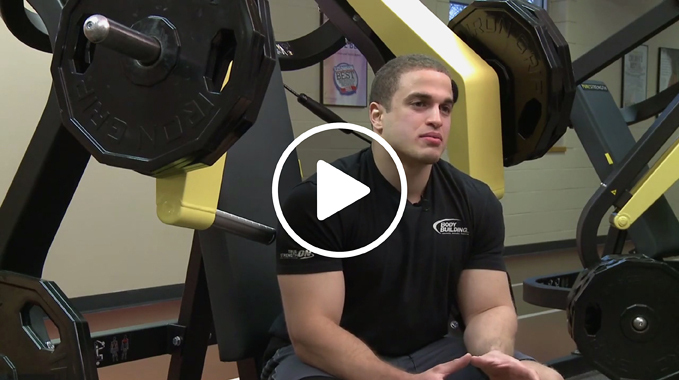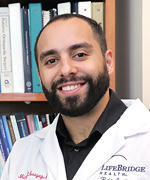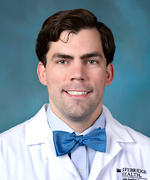Growth Plate Fracture or Injury
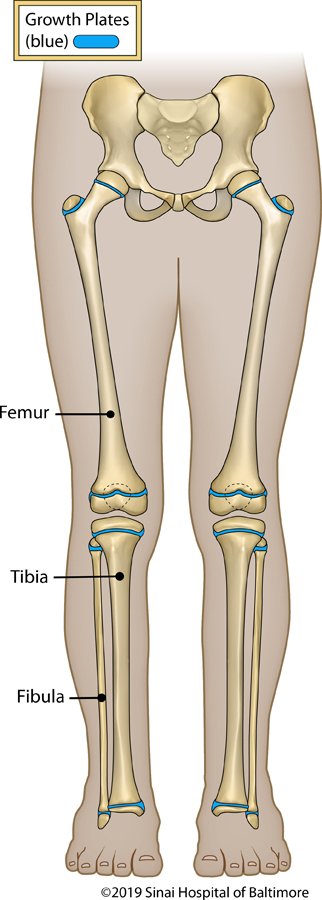
What is a growth plate in a bone?
Growth plates control how bones grow in children. They are located near joints and are active in children and adolescents. Growth plates close once maturity is reached.
What is a growth plate fracture?
A growth plate can be fractured in the same way that a bone can be fractured. Growth plate fractures are common due to the soft and delicate nature of the growth plates. Growth plates do not appear on X-rays since they are not calcified like other bones. Because of this, it may be impossible to detect a growth plate fracture through an X-ray. In adults, traumatic force applied near a joint typically causes a “sprain” to the ligaments. In children is more commonly caused by a disruption (or fracture) through the growth plate. Boys are at a greater risk of fracturing a growth plate than girls, because girls finish growing sooner than boys. Typically the growth plates in the arms and legs close (disappear) at age 14 in girls and age 16 in boys.
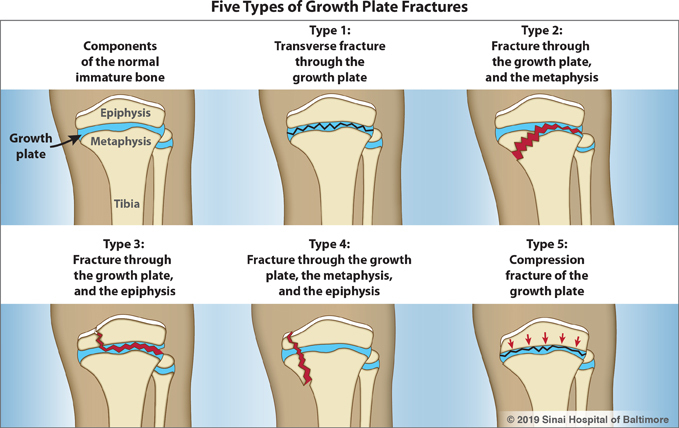
What causes a growth plate fracture?
Like fractures in other bones, growth plate fractures most often occur after a traumatic blow to the area. Sports such as football, soccer, gymnastics or dancing are typical activities during which growth plate fractures occur. Recreational activities such as skateboarding, biking, trampolining, skiing or running can also put children at risk of a growth plate fracture.
What are the symptoms of a growth plate fracture?
Growth plate fractures often occur in the lower legs or forearms. A growth plate fracture can cause nearby joints to feel warm or swell. The fracture can cause pain, especially when pressure is applied to the area. Being unable to put weight on or move the arm or leg can be another symptom of a growth plate fracture. Your doctor will examine X-rays to determine if the bone is fractured and if this fracture goes through a growth plate.
What effect does a growth plate fracture have on children?
Without treatment, even after a fractured growth plate heals, a growth arrest can still occur. A growth arrest can cause the bone to grow unevenly and become crooked. The bone may also stop growing altogether, resulting in a shorter arm or leg. Most growth plate injuries heal after 4-6 weeks of immobilization in a cast. However, there is always a risk that a growth plate fracture could result in premature stoppage of growth of that particular growth plate.
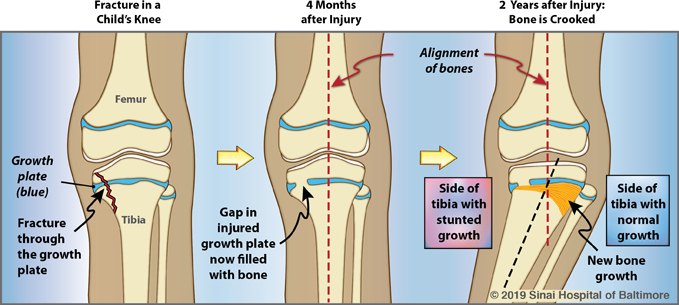
How is a growth plate fracture treated?
The treatment depends on the severity of the injury. Usually the fracture will require a cast or splint until the bone heals properly. As mentioned above, most growth plate injuries heal after 4-6 weeks of immobilization. If the injury is more severe, surgery may be required to make sure that the bone is able to heal. Please see the growth arrest condition page for information on how a growth arrest is treated.
After a growth plate fracture heals, should the child continue to see the doctor to make sure that the bone is growing normally?
In most cases it is impossible to tell at the time of injury if there will be a permanent cessation of growth, either partial or complete. Therefore, it is important for you to bring children back for follow-up visits for 6-12 months after the injury.
Why choose the International Center for Limb Lengthening to treat a growth plate fracture?
The International Center for Limb Lengthening pediatric orthopedic surgeons specialize in limb lengthening and deformity correction, so they are uniquely qualified to treat children with growth plate fractures and to correct any complications that may arise from them. Your doctor at the International Center for Limb Lengthening will take the time to make sure you understand all your options and then will customize your treatment to meet your specific needs. Our patients benefit from our team-centered approach with world-renowned surgeons and specialized physician assistants, nurses and physical therapists. We help patients with growth plate fractures achieve their best possible result.
The International Center for Limb Lengthening has launched a Pediatric Fracture Clinic with same or next day appointment availability five days a week at Sinai Hospital and on Mondays and Thursdays at Foundry Row in Owings Mills. If you are seeking fracture care for a child, please call 410-601-BONE (2663) to make an appointment with our expert pediatric orthopedic team.
Video
A patient with a limb length discrepancy that resulted from a growth plate fracture in his youth tells his story of having his leg lengthened with the Precice internal lengthening system.
Interview with Dr. Philip McClure about Growth Plate Fractures
Dr. Philip McClure is interviewed about treating children’s growth plate fractures in this September 2021 LifeBridge Health/WJZ 13 CBS Baltimore blog post that was also featured on HealthNewsDigest.com.
Doctors who treat growth plate fractures or injuries
*Patients Over 16 Years Old Only
†Children and Adolescents/Young Adults Only
